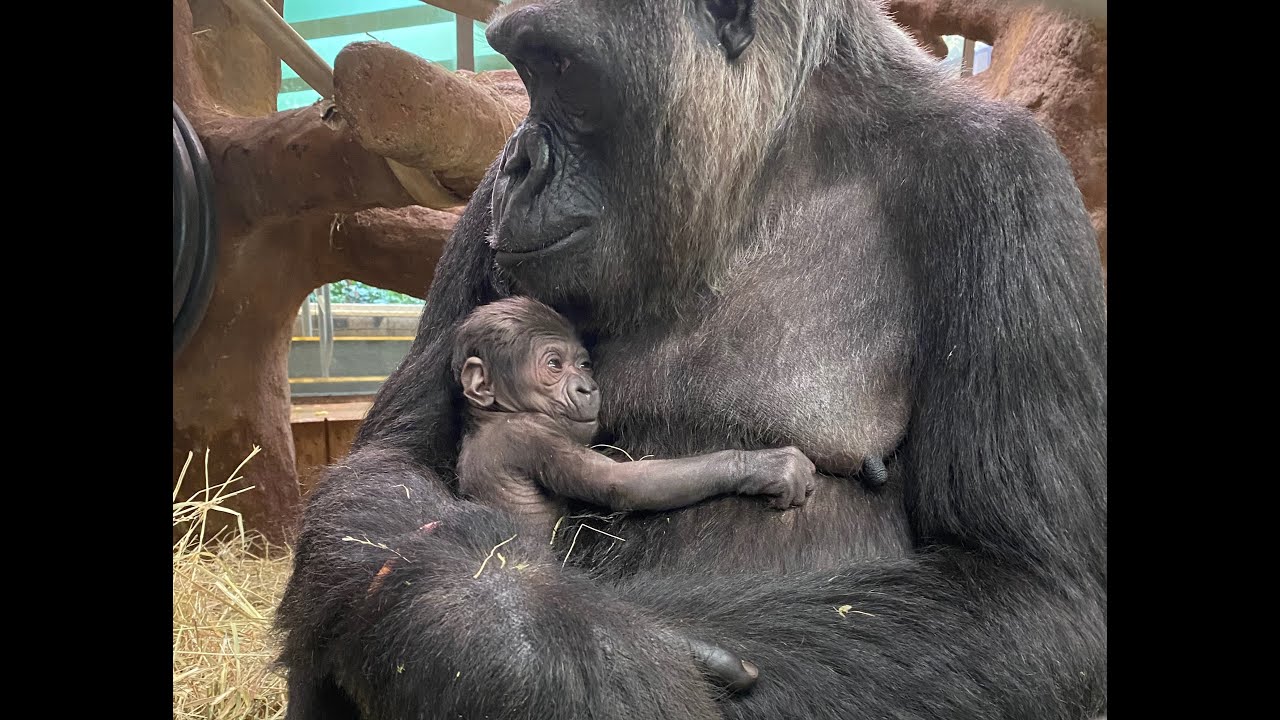Summary:
1. The birth of a Western Lowland Gorilla at the Smithsonian’s National Zoo.
2. The mother-child bond between Calaya and her infant.
3. The conservation efforts to protect endangered gorillas.
4. The unique physical and behavioral traits of Western Lowland Gorillas.
5. The importance of zoos in educating the public about animals and their conservation.
The world welcomed another Western Lowland Gorilla on May 27, 2023, born at the Smithsonian’s National Zoo and Conservation Biology Institute in Washington, D.C. The baby gorilla’s mother, Calaya, has been observed in a video gently cradling her newborn, showing the close bond between a mother and her offspring in the animal world. Let’s dive deeper into the fascinating world of Western Lowland Gorillas and explore how zoos play a vital role in their conservation.
Western Lowland Gorillas, or Gorilla gorilla gorillas, are among the four gorilla subspecies and the most numerous, with an estimated population of 100,000 individuals. These gentle giants inhabit the dense rainforests of Central and West African countries such as Cameroon, Gabon, and the Republic of Congo. The Western Lowland Gorilla’s fur is dark brown to black, and the males have a prominent silver saddle-shaped patch over their back, earning them the moniker “silverback.”
One of the most remarkable facts about Western Lowland Gorillas is their incredible intelligence. These apes can use tools like sticks to probe termite mounds for food and exhibit social behavior that showcases their complex emotions. Western Lowland Gorillas have a structured society led by a dominant male silverback, which protects the group and its resource. Females also play a role in caring for the young, with the mother-child bond powerful.
Unfortunately, Western Lowland Gorillas are listed as Critically Endangered by the International Union for Conservation of Nature (IUCN). Habitat destruction, poaching, and spreading diseases like Ebola have decimated their population by 60% in the last two decades. The gorilla’s fondness for fruits and the destruction of their natural habitat for logging and farming have led to conflicts with humans. Conservationists have been working tireless efforts to protect this subspecies from extinction.
Zoos play an undeniably crucial role in conserving Western Lowland Gorillas. The Smithsonian’s National Zoo and other accredited zoos worldwide participate in breeding programs that ensure genetic diversity within the captive population. These programs continue to play a vital role in preserving this subspecies.
Zoo animals and their offspring can help educate the public about the importance of conservation. Seeing these majestic animals up close and learning about their behavior and ecology can spark a passion for wildlife conservation. Zoos also fund and participate in significant conservation efforts, such as habitat protection, disease control, and antipoaching measures.
The birth of the Western Lowland Gorilla at the Smithsonian’s National Zoo is not just a milestone for the zoo but also a beacon of hope for a subspecies on the brink of extinction. The mother-child bond captured in the video reminds us that animals have complex emotions and social structures similar to humans. With continued conservation efforts, we can ensure that future generations can appreciate the beauty and importance of Western Lowland Gorillas in the wild and captivity.
*****
Source Description
A western lowland gorilla was born at the Smithsonian’s National Zoo and Conservation Biology Institute in Washington, D.C., on May 27, 2023. In this video, the infant is cradled by its mother, Calaya.


